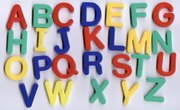Without syntax -- the order of words in a sentence -- language would be gibberish. Changing the word order changes the meaning. “I can go,” for example, is very different from “Can I go?” And “Go I can” is meaningless. Learning and Teaching, a peer-reviewed journal of the social sciences, reports that sentences with words in the wrong order are a problem for some children, as are confusing verb tenses and getting words that end in "ed," "s" and "ing" wrong.
Step 1
Model correct syntax. Learning and Teaching suggests that rather than correcting, you rephrase the sentence as it should have been constructed. If a child says, “Home I went today,” reply, “Oh, you went home today. What did you do there?”
Step 2
Use sentence completion exercises to improve syntax. Give students open-ended sentences, such as “The duck waddled..." or “The man went..." and have them complete the sentences so that they make sense. These exercises can be done orally or as written assignments.
Step 3
Write words on cards and have the students arrange them to form complete simple sentences. As with the modeling exercise, read the sentence and ask whether it makes sense. Students sometimes hear a syntax error that they do not see.
Step 4
Develop basic skills. Teach students that sentences start with capital letters and that they end with periods.
Step 5
Teach how sentences often use a noun-verb-direct object pattern. Build on the earlier sentence exercise and make flashcard piles of nouns, verbs and direct objects, identifying the categories with different-colored markers, and have the students construct more complex sentences by adding adjectives and pronouns.
Step 6
Perform verb exercises. Write “yesterday,” “today” and “tomorrow” on the whiteboard and have the students conjugate a list of verbs using the past, present and future tenses. Then have them construct short sentences, such as "Yesterday I went to school. Today I go to school. Tomorrow I will come to school." This short exercise can easily be done when you have five minutes before recess.
Step 7
Use songs and nursery rhymes to help children improve their syntax. Repetition is essential to language learning, and singing helps make learning correct word order automatic.
Step 8
Praise students when they get it right. Say quietly, “Oh, I’m so pleased that you got the word order right.” A little positive reinforcement goes a long way toward improving language skills, particularly at the primary level.
Related Articles
Writer Bio
Jody Hanson began writing professionally in 1992 to help finance her second around-the-world trip. In addition to her academic books, she has written for "International Living," the "Sydney Courier" and the "Australian Woman's Forum." Hanson holds a Ph.D. in adult education from Greenwich University.











